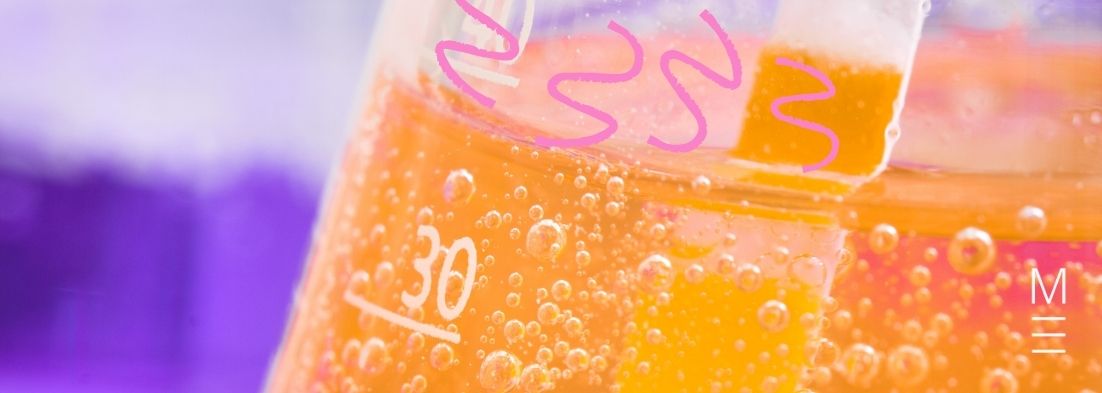Welcome to Matrix Education
To ensure we are showing you the most relevant content, please select your location below.
Select a year to see courses
Learn online or on-campus during the term or school holidays
Learn online or on-campus during the term or school holidays
Learn online or on-campus during the term or school holidays
Learn online or on-campus during the term or school holidays
Learn online or on-campus during the term or school holidays
Learn online or on-campus during the term or school holidays
Learn online or on-campus during the term or school holidays
Learn online or on-campus during the term or school holidays
Learn online or on-campus during the term or school holidays
Learn online or on-campus during the term or school holidays
Select a year to see available courses
Science guides to help you get ahead
Science guides to help you get ahead
Here is the ultimate list of chemical reactions from your Equilibrium and Acid Reactions, Acid/Base Reactions, and Organic Chemistry Modules!

Join 75,893 students who already have a head start.
"*" indicates required fields
Related courses

Join 8000+ students each term who already have a head start on their school academic journey.
Do you find yourself flipping through pages of notes just to find a particular chemical reaction? Well, you don’t have to do that anymore! Here are all the important chemical reactions Year 12 students must know!
Word equation: metal + oxygen → metal oxide
Examples:
Burning magnesium: \( 2Mg_{(s)} \ + \ O_{2(g)} \ → \ 2M_{g}O_{(s)} \)
Burning steel wool: \( 4Fe_{(s)} \ + \ 3O_{2(g)} \ → \ 2Fe_{2}O_{3(s)} \)
1. Complete combustion produces carbon dioxide and water.
Examples:
Hydrocarbon: \( C_{3}H_{8(g)} \ + \ 5O_{2(g)} \ → \ 3CO_{2(g)} \ + \ 4H_{2}O_{(l)} \)
Alcohol: \( C_{2}H_{5}OH_{(l)} \ + \ 3O_{2(g)} \ → \ 2CO_{2(g)} \ + \ 3H_{2}O_{(l)} \)
2. Incomplete combustion occurs when insufficient oxygen is present for a complete reaction to occur.
Water and carbon monoxide (\(CO_{(g)}\)) and/or soot (\(C_{(s)}\)) are produced in an incomplete combustion.
Word equation: carbon dioxide + water → glucose + oxygen
Chemical equation: \( 6CO_{2(g)} \ + \ 6H_{2}O_{(l)} \ → \ C_{6}H_{12}O_{6(s)} \ + \ 6O_{2(g)} \)
A saturated solution of an ionic compound will be in dynamic equilibrium.
Example: \( CuSO_{4(aq)} \ ⇌ \ Cu^{2+} \ _(aq) \ + \ SO_{4^{2-} (aq) }\)
A good knowledge of the solubility rules is essential to determining whether a precipitation reaction will occur when solutions containing ionic compounds are mixed.
Example:
Full formula equation: \( BaCl_{2(aq)} \ + \ Na_{2}SO_{4(aq)} \ → \ BaSO_{4(s)} \ + \ 2NaCl_{(aq)} \)
Net ionic equation: \( Ba^{2+} \ _{(aq)} \ + \ SO_{4^{2-} (aq)} \ → \ BaSO_{4(s)} \)
Get ahead in HSC Chemistry
Expert teachers, comprehensive resources, 24/7 help with Ask Max! Learn from home with Matrix+ online.
1. Strong acids undergo complete ionisation in water
Example: \( HCl_{(aq)} \ + \ H_{2}O_{(l)} \ → \ H_{3}O^{+} \ _{(aq)} \ + \ Cl^{-} \ _{(aq)} \)
\( (HCl_{(aq)} \ → \ H^{+} \ _{(aq)} \ + \ Cl^{-} \ _{(aq)}) \)
2. Weak acids undergo partial ionisation in water
Example: \( CH_{3}COOH_{(aq)} \ + \ H_{2}O_{(l)} \ ⇌ \ H_{3}O^{+} \ _{(aq)} \ + \ CH_{3}COO^{-} \ _{(aq)} \)
\( (CH_{3}COOH_{(aq)} \ ⇌ \ H^{+} \ _{(aq)} \ + \ CH_{3}COO^{-} \ _{(aq)}) \)
3. Strong bases undergo complete dissociation in water
Example: \( NaOH_{(aq)} \ → \ Na^{+} \ _{(aq)} \ + \ OH^{-} \ _{(aq)} \)
4. Weak bases undergo partial ionisation in water
Example: \( NH_{3(aq)} \ + \ H_{2}O_{(l)} \ ⇌ \ NH_{4^{+} (aq)} \ + \ OH^{-} \ _{(aq)} \)
Word equation: acid + base → salt + water
Example: \( H_{2} \color{red}{SO_{4}} _{(aq)} \ + \ 2 \color{blue}{K} OH_{(aq)} \ → \ \color{blue}{K_{2}} \color{red}{SO_{4}} _{(aq)} \ + \ H_{2}O_{(l)} \)
Word equation: acid + carbonate → salt + water + carbon dioxide
Example: \( 2H \color{red}{NO_{3}} _{(aq)} \ + \ \color{blue}{Na} _{2} CO_{3(s)} \ → \ 2 \color{blue}{Na} \color{red}{NO_{3}} _{(aq)} \ + \ H_{2}O_{(l)} \ + \ CO_{2(g)} \)
Word equation: acid + metal → salt + hydrogen gas
Example: \( 2H \color{red}{Cl} _{(aq)} \ + \ \color{blue}{Mg} _{(s)} \ → \ \color{blue}{Mg} \color{red}{Cl} _{2(aq)} \ + \ H_{2(g)} \)
Word equation: acid + ammonia → ammonium salt
Example: \( HCl_{(aq)} \ + \ NH_{3(aq)} \ → \ NH_{4}Cl_{(aq)} \)
1. Complete combustion produces carbon dioxide and water.
Examples:
Hydrocarbon: \( C_{3}H_{8(g)} \ + \ 5O_{2(g)} \ → \ 3CO_{2(g)} \ + \ 4H_{2}O_{(l)} \)
Alcohol: \( C_{2}H_{5}OH_{(l)} \ + \ 3O_{2(g)} \ → \ 2CO_{2(g)} \ + \ 3H_{2}O_{(l)} \)
2. Incomplete combustion occurs when insufficient oxygen is present for a complete reaction to occur.
Water and carbon monoxide \((CO_{(g)})\) and/or soot \((C_{(s)})\) are produced in an incomplete combustion.
Fermentation of glucose: \( C_{6}H_{12}O_{6(aq)} \ → \ 2C_{2}H_{5}OH_{(l)} \ + \ 2CO_{2(g)} \)
Conditions for fermentation:
1. Oxidation: \( M_{(s)} \ → \ M^{+} \ _{(aq)} \ + \ e^{-} \)
2. Reduction: \( M^{+} \ _{(aq)} \ + \ e^{-} \ → \ M_{(s)} \)
3. Redox equation: Combine oxidation and reduction equations and balance electrons.
Example
4. Limewater test: \( Ca(OH)_{2(aq)} \ + \ CO_{2(g)} \ → \ CaCO_{3(s)} \ + \ H_{2}O_{(l)} \)
Written by Matrix Science Team
The Matrix Science Team are teachers and tutors with a passion for Science, across Biology, Chemistry and Physics, and a dedication to seeing Matrix Students achieving their academic goals.© Matrix Education and www.matrix.edu.au, 2025. Unauthorised use and/or duplication of this material without express and written permission from this site’s author and/or owner is strictly prohibited. Excerpts and links may be used, provided that full and clear credit is given to Matrix Education and www.matrix.edu.au with appropriate and specific direction to the original content.